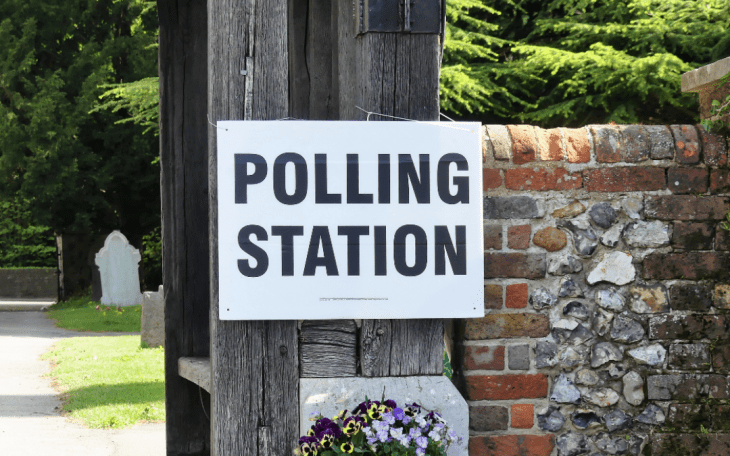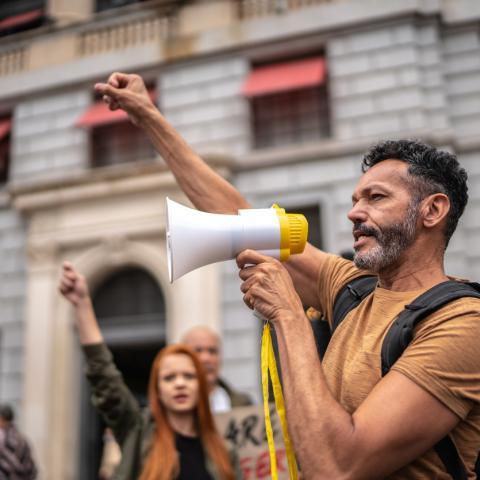Party Politics

By Phil Briscoe, Managing Director, Vincent Carroll-Battaglino, Account Director, and William Gould, Executive
Conservatives
The Conservative election campaign has been largely uneventful this year and although they have lost one Minister because of alleged bullying and expelled another MP because of his words and actions, neither were new for this campaign. They go into polling day repeating messages around lower council taxes, better services, lower crime, fewer potholes and better value for money.
Predictions and polls have been used to set expectations, as polling at Conservative HQ suggests they will lose around 500 council seats tomorrow. However, the line that has been put out is an expectation of losing over 1,000 seats, so that anything less can be portrayed as a win.
How do we measure success or failure on the numbers of seats, and what will be able to draw from these results? As a starting point, it is worth turning back 28 years (or seven of the current four-year term cycles). A Conservative government seemingly in their final days and two local elections away from the Labour landslide of 1997, the elections of 1995 saw the Conservatives lose a massive 2,018 seats, with 1,807 of them transferring directly to Labour. The Conservative vote share and presence in local government was then significantly smaller than their starting point for these elections, even after considering their loss of over 1,300 seats in 2019.
It is impossible to truly compare like for like, with boundary changes, new authorities and different election dates, but the Conservatives came out of the 2019 elections with over 1,500 councillors more than they finished up with in 1995. This suggests that there is room for them to fall further this time, but is the mood as bleak for them now as it was in 1995? On that night, Labour secured almost 5,000 seats in England and the Liberal Democrats finished up with over 2,600 – both Parties start from a much lower base this time, so will be seeking significant gains to show they are back in the race for power.
To gauge Conservative success, you should look at the 500-seat rule – if they lose less than 500, they have had a fairly good night, if they lose 500-1000 they have fared worse than expected but not unexpectedly for this stage of the electoral cycle. If their losses top 1,000, then that will go down as a somewhat disastrous night.
Labour
When this election campaign was launched, Labour was explicit that it was a “road test” of its messaging for the general election expected next week. This meant capitalising on the national polls by concentrating on cost of living, Tory sleaze and leadership personalities. But nothing could have quite prepared us for the attack ad campaign targeting Rishi Sunak and tying him to various government failures over the last 13 years. It wasn’t quite a “dead cat” strategy, but in the immediate term it put Labour’s national message front and centre in the media. As our Executive Chairman Mark Glover said in PR Week, “how it affects their vote in future elections will ultimately tell us whether Labour was justified in deploying them or not.” Even the one foray into local council policy was actually a national one: Labour campaign literature has claimed that “Labour would freeze council tax this year” for all councils, perhaps hoping to capitalise on negativity over the spate of councils increasing rates by 5% or more to cover increasing cost pressures. Even so, it was later revealed this was not a promise for the next Labour government, but an example of what Labour would have done if it was in power in 2023.
Last week The Observer reported on “frustration” at Labour HQ at local council groups informally agreeing electoral pacts with other parties to punish the Conservatives. There’s also strong evidence of such an alliance between the Lib Dems and Greens in Mid Suffolk, with voters mostly given two choices – Conservative or another. The national party may prefer to portray an “all or nothing, presence everywhere” policy, but it’s possible to see the alliances as a positive harbinger. The last time Lib-Lab pacts were discussed was in the years before the 1997 general election. The discussions between Tony Blair and Paddy Ashdown were real, but when the votes were counted on the night of 1 May, it was very clear Labour would have no need for a supportive partner. How Starmer would love to emulate that performance!
We still think a big win by Friday 5pm will be Brighton & Hove. Our contacts there tell us that “paper candidates” have suddenly found themselves in target wards with full-time organisers and national resources on hand to secure the majority. This is going on the polling and canvass returns so far. It’s an authority in which SEC Newgate is highly active, and we do think an overall majority will be good news for developers, for clarity of political vision if nothing else. Labour will be advocating for tactical voting here to help get over the line (28 seats, eight more than last time).
What does Labour need to see for this year to be a success? Wins from all sides are good (and that’s why the Labour leadership will be so keen to win in Brighton & Hove) but ultimately I still think Labour needs to close its opportunities in marginal authorities in the Midlands and regain ground in the Blue Wall. Essentially, the seats you hear about as key indicators on general election night are the biggest prize. Grab them and the fight between the Lib Dems and Conservatives in the south becomes a minor sideshow.
Liberal Democrats
Throughout the six-week election campaign, the Liberal Democrats have grown increasingly confident about their prospects as they target traditional "blue wall" seats. Their campaign began with a symbolic gesture after party leader Sir Ed Davey drove a yellow tractor into a row of blue hay bales in Buckinghamshire, signalling the party's determination to penetrate Conservative strongholds.
As campaigning for the local elections progressed, the party's electoral strategy became more focused. They aimed to address Conservative voters' frustration with the government's record on the cost of living and local health services. However, possibly sensing that Labour was squeezing that market, they also ‘went local’ with water pollution a key issue in several Conservative authorities including Lewes, Winchester, Cheltenham, and Chesham & Amersham. Lib Dem leader Ed Davey claims that this issue had resonated with many frustrated Tory voters in ways that other environmental issues had not, and he visited Eastbourne to see for himself the town’s storm overflows.
Despite a campaign largely devoid of dogma (compared to the controversy around Labour's attack ads), the party did encounter several setbacks during the campaign. In Sheffield, party candidates posted 'misleading' election leaflets in a marginal ward, while a Rochdale candidate was accused of promoting a "cocktail of religious hatred" after attacking Suella Braverman's background on social media. Complaints were made to police about a Salford Lib Dem councillor (up for election in 2026) who is standing for election in Cotswold District Council.
Senior Lib Dems remain optimistic about gaining around 250 seats, with most expected to come from the "true blue heartlands" of West Berkshire, Windsor and Maidenhead, Stratford-on-Avon, Cherwell, and Dacorum. The party also hopes to put pressure on the Conservatives in Bath & North East Somerset and Labour in Hull, attempting to revert those authorities to no overall control, with the Lib Dems becoming key dealmakers.
A strong showing in local elections is nothing new for the Lib Dems, but how sticky can their vote be? Early indications are that the Lib Dems will target former Deputy Prime Minister Dominic Raab's constituency in Esher and Walton, as well as Stratford-on-Avon (currently former chancellor Nadhim Zahawi), and Wokingham (currently veteran MP John Redwood). But with national polls still putting the Lib Dems on 10 percent, a major breakthrough is still some way away. So far, so Lib Dem.









